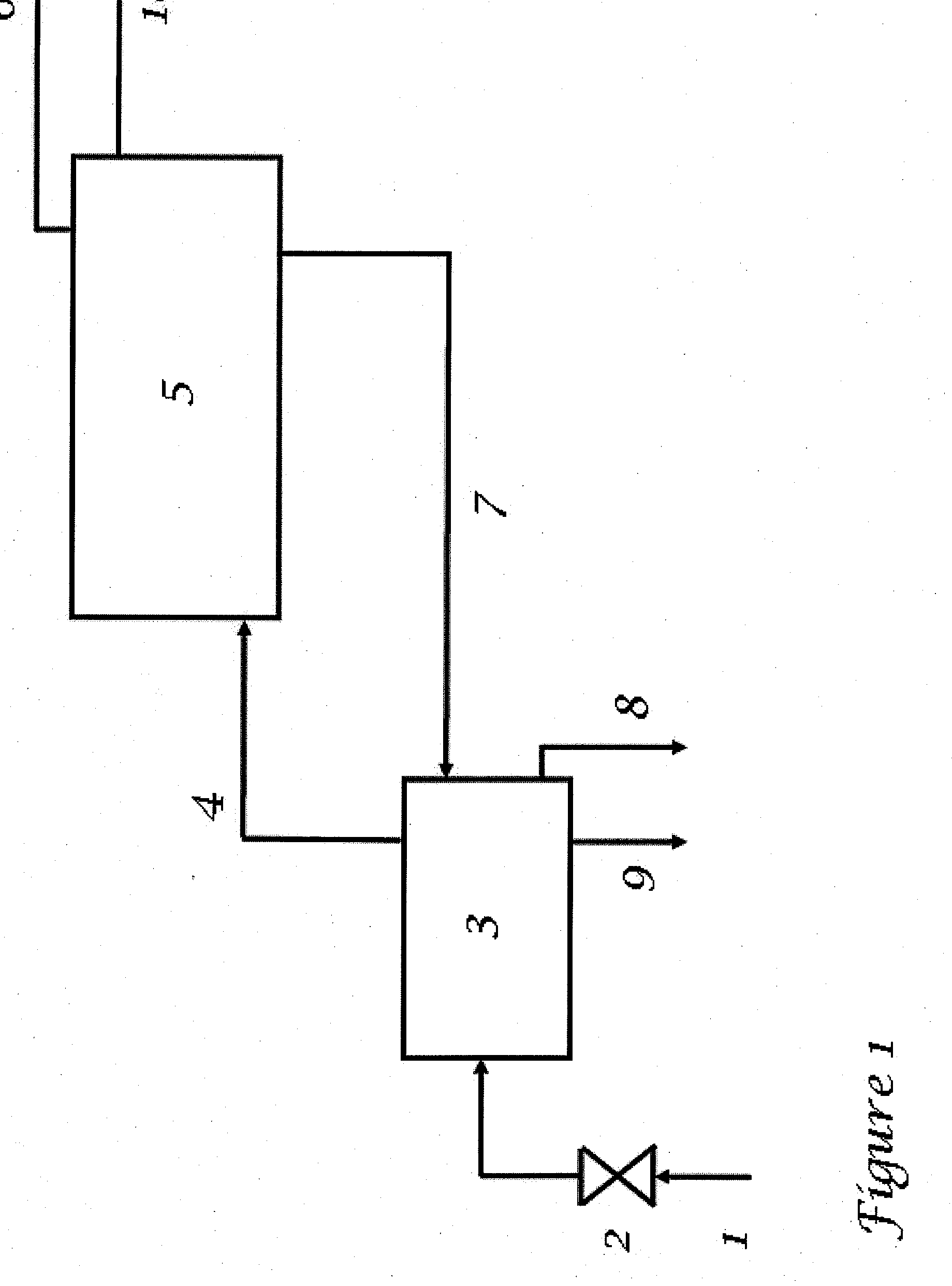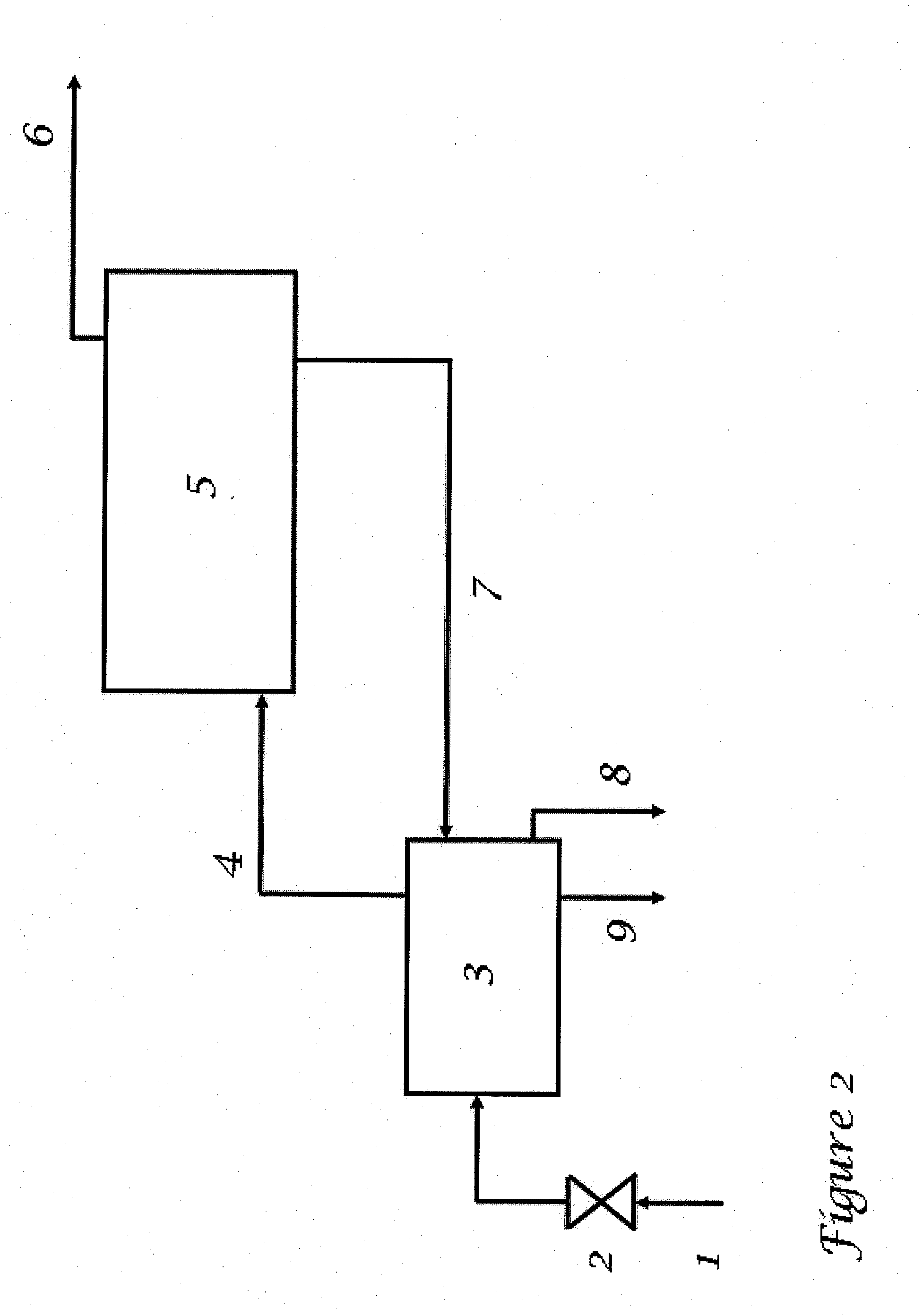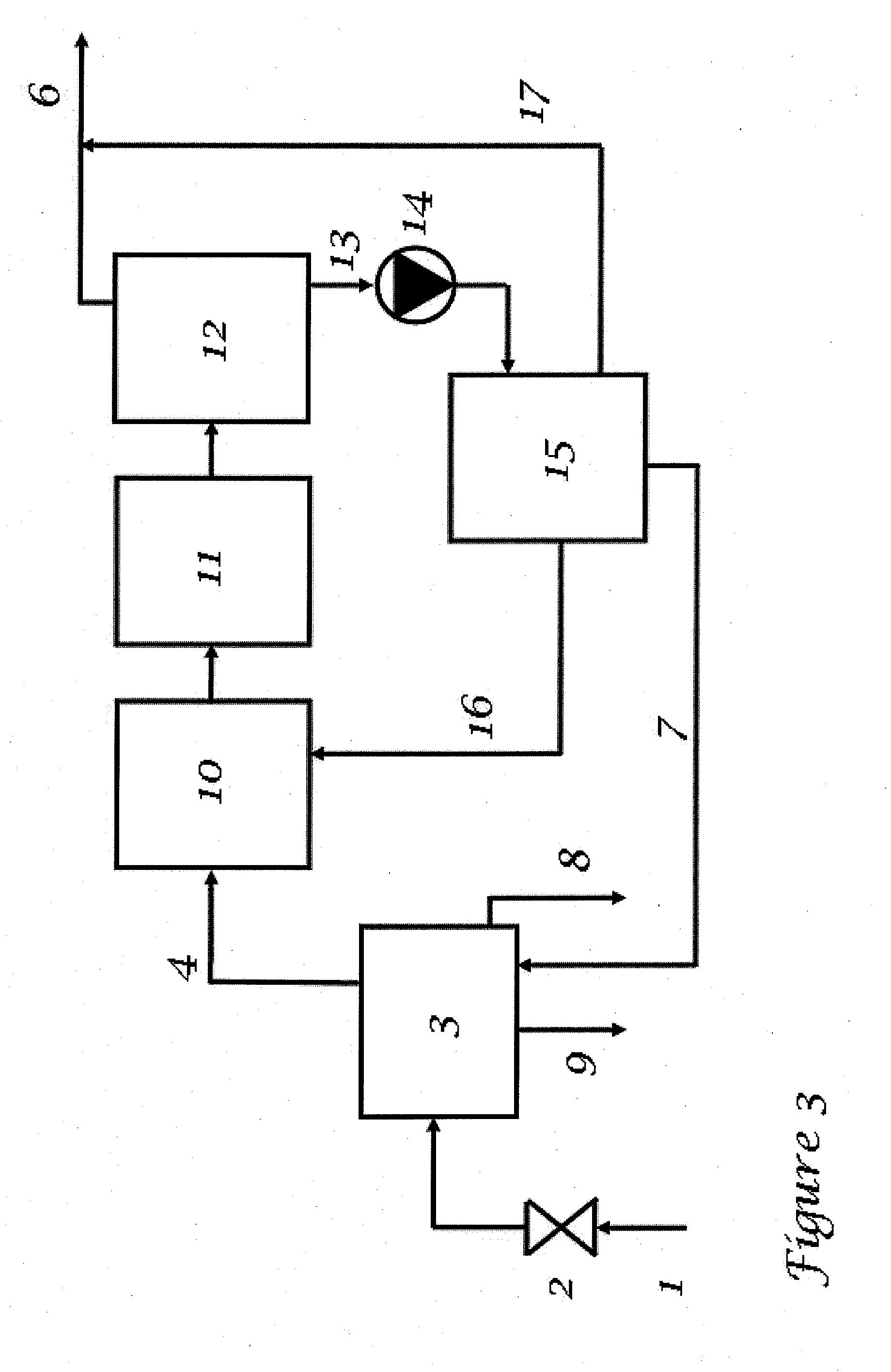Treatment of produced hydrocarbon fluid containing water
- Summary
- Abstract
- Description
- Claims
- Application Information
AI Technical Summary
Benefits of technology
Problems solved by technology
Method used
Image
Examples
example 1
[0069]Gas production from an offshore field with a production platform or ship (or onshore gas production in a cold region).
[0070]An implementation of the present invention might consist of the following steps:[0071]The gas production is choked down to a suitable pressure, if needed.[0072]The gas and any liquid first passes through a warm (usually above 20° C.) separator (which is also used to melt excess hydrate from later process steps).[0073]Gas (4) and condensate (8) from the warm separator (3) pass on to the mixing point (10)(FIG. 3), where they meet a cold (usually −2 to 8° C.) gas hydrate slurry (16) from a cold separator (15)[0074]The mixture is flowed through a pipeline (11) which utilizes heat exchange with cold outside water (or air) as a means of cooling.[0075]Whenever suitable, satellite wells may be connected to the flow (11) with shorter or longer tie-backs, or alternatively be lead into the warm separator (3) as extra production stream (directly from the satellite to...
example 2
[0084]Gas production from a subsea installation
[0085]For most purposes in this embodiment, the process flow will be the same as described in Example 1 above. The main difference is that all equipment is moved subsea, to a central location where production from the most gas-rich and formation water rich production wells are gathered, allowing enough heat to apply the melting step for excess hydrate slurry in the warm separator (3). The remaining production wells (less gas, less formation water) may be simply phased into cooling loop (11) through shorter or longer tie-backs.
example 3
[0086]Oil production from a subsea installation, or a platform, with processing possibilities both subsea and topsides.
[0087]An implementation of the present invention is in many respects identical to the preceding, and might include, but not limited to, the following steps:[0088]The production flow (1), containing oil, gas, water, and / or condensate, is choked (2) down to a suitable pressure, if needed.[0089]The fluid flow (1) first passes through a warm (usually above 20° C.) separator (3) (which is also used to melt excess hydrate from later process steps).[0090]Liquid hydrocarbon (8) and gas (4) (containing water vapour) from the warm separator (3) pass on to the mixing point (10) (FIG. 3), where they meet a cold (usually −2 to 8° C.) gas hydrate slurry (16) from a cold separator (15)[0091]The mixture is flowed through a pipeline (11) which utilizes heat exchange with cold outside water (or air) as a means of cooling.[0092]Whenever suitable, satellite wells may be connected to th...
PUM
 Login to View More
Login to View More Abstract
Description
Claims
Application Information
 Login to View More
Login to View More - R&D
- Intellectual Property
- Life Sciences
- Materials
- Tech Scout
- Unparalleled Data Quality
- Higher Quality Content
- 60% Fewer Hallucinations
Browse by: Latest US Patents, China's latest patents, Technical Efficacy Thesaurus, Application Domain, Technology Topic, Popular Technical Reports.
© 2025 PatSnap. All rights reserved.Legal|Privacy policy|Modern Slavery Act Transparency Statement|Sitemap|About US| Contact US: help@patsnap.com



